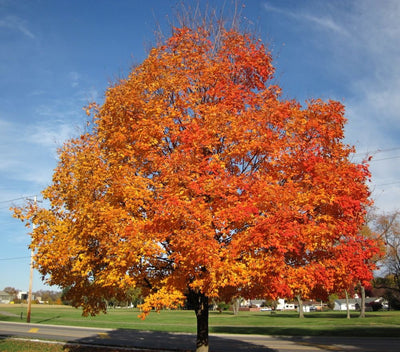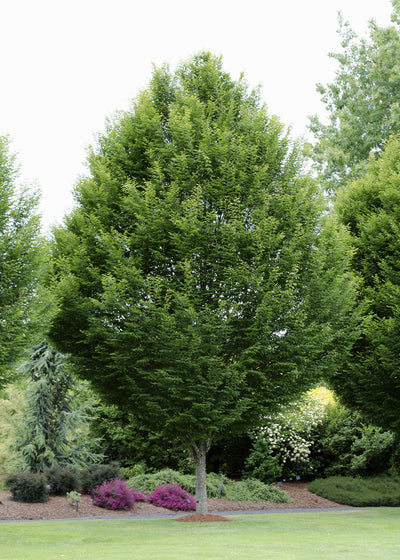One of the best things about farming is growing trees. In any yard, trees add beauty, shade, and environmental value. But a lot of people make easy but expensive common gardening mistakes that keep young trees from reaching their potential.
If you know how to plant trees then they can live many years just water them and take care of them. You can make your garden a healthy, green haven that will help your family and the environment for years to come if you take the time and care to do it right.
Planting in the Wrong Location
Picking the wrong spot is one of the most common mistakes when growing trees people make when they are growing trees. Trees need room to grow in the ground and above it. Planting them too close to walls, buildings, or other trees could make it hard for their roots to spread, and as the trees grow, their branches could damage other trees.
Always find out how tall and wide a plant will grow to be before you put it. The Silver Maple Tree, for instance, grows quickly and casts a lot of shade, but its roots and wide branches need a lot of space. If you plant it too close to your house, the roots could get in and cause problems later on.
When you learn how to plant trees, choose a spot that gets enough sun and doesn't get too wet. Planting trees that like full sun in shady, wet soil can hurt their growth and make them more likely to get diseases.
Planting Low-Quality Trees
Poorly grown or unhealthy trees may not do well even if they are put in the right spot. Always buy trees from nurseries you can trust that focus on native and well-adapted types.
For example, TN Nursery sells strong trees like the Hornbeam Tree that were grown in a nursery. The Hornbeam is tough and looks good in both urban and country settings. Its grey bark is very attractive, and its leaves are very dense.
When you go to buy a tree, make sure it has:
- Healthy roots that aren't root-bound or circling the pot
- No damage or pests that you can see
- A strong centre leader
Having healthy trees to begin with is the key to good tree care and long-term landscape growth.
Overwatering or Underwatering Trees
Not giving plants enough water is one of the most common gardening mistakes. Both too much and too little water can hurt roots and slow down growth.
- Too much water suffocates roots by cutting them off from air, which causes them to rot.
- Not enough water causes stress, which makes leaves wilt and lessens their ability to absorb nutrients.
Balance is very important when you're trying to grow trees. Deeply water plants but not too often. This way, the water can reach the roots and the soil can dry out a bit between sessions. When trees are first planted, they usually need to be watered regularly for the first two years until they are fully established.
To test, just dig your finger into the ground about two inches deep. It's time to water if it feels dry. Wait a day or two longer if it's still wet.
Tree Care Tips for Beginners
How well your trees do depends on how well you take care of them after you put them. The following are some useful tree maintenance tips:
- Put mulch around the base: This helps keep the soil wet, keeps it at the right temperature, and keeps weeds from competing with the plants.
- Don't pile leaves up against the trunk: Leave a small space between things to stop rot and insect harm.
- Cut the tree down properly: During the dormant season, get rid of any dead or crossing branches.
- Keep an eye on it often: While the plants are growing, keep an eye out for signs of pests or diseases.
Use organic soil or a slow release fertiliser only when needed to give your plants a little extra help.
You can make sure that your trees stay healthy and strong through all four seasons by following these tree maintenance tips regularly.
How to Correct Common Gardening Mistakes
Do not worry if you have made mistakes in the past. Trees are surprisingly merciful, and with the right care, they can often grow back. This is how to fix some of the most common mistakes when growing trees:
1. Move trees that are in the wrong place
If your tree is still young and in the wrong place, carefully dig it up and put it somewhere better in the early spring or autumn.
2. Make the soil better
This will help the soil drain better. Add organic waste or compost to make it more open. Trees like dirt that has a lot of air holes in it so their roots can breathe.
3. Change how you water plants
Plan when to water based on how much it rains where you live. Use a soaking hose to water deeply, and don't water shallowly every day.
4. Help trees that are weak
If young trees are leaning or struggling, gently stake them for one growth season to make sure their trunks grow straight and strong.
Building a Thriving Landscape
Trees that are healthy add shade, beauty, and natural balance to any area they are in. Choose trees for your yard by thinking about how they grow, how much light they need, and how big they will get when they're fully grown. Native trees, such as the Silver Maple Tree and the Hornbeam Tree, are great adds because they do well in a wide range of climates and don't need much care once they're established.
For generations of enjoyment and natural beauty your trees will grow strong if you do not make common gardening mistakes and follow smart tree maintenance tips.
FAQs
How do I choose the right location for a tree?
There should be enough space for the tree's full height and root growth, as well as enough sunlight and drainage.
What is one of the biggest mistakes when planting a tree?
If you plant something too deeply or too close to a building, it can stop growing and cause damage in the future.
What is the best soil for planting new trees?
The best soil is one that drains well, is full of nutrients, and has a reasonable amount of water. Adding compost makes the soil more fertile.
How often should trees be pruned?
Pruning most trees once a year is best, ideally in late winter before the new growth starts.
Where can I buy healthy native trees for my landscape?
At TN Nursery, you can find hardy, high-quality native species like Silver Maple and Hornbeam trees. You can trust them to grow plants carefully.



